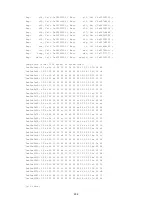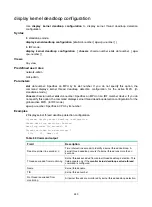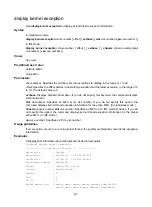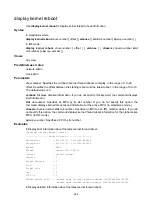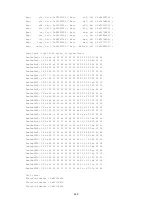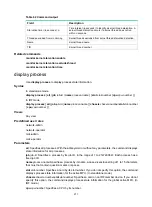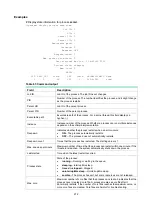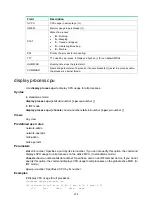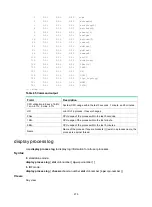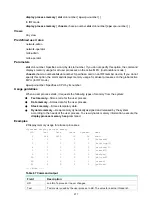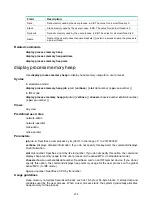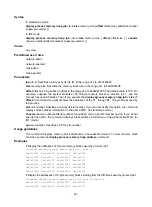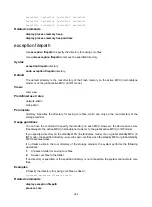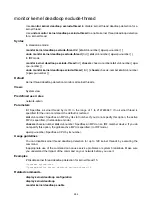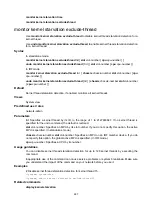
272
Examples
# Display state information for process
scmd
.
<Sysname> display process name scmd
Job ID: 1
PID: 1
Parent JID: 0
Parent PID: 0
Executable path: -
Instance: 0
Respawn: OFF
Respawn count: 1
Max. spawns per minute: 0
Last started: Wed Jun 1 14:45:46 2013
Process state: sleeping
Max. core: 0
ARGS: -
TID LAST_CPU Stack PRI State HH:MM:SS:MESC Name
1 0 0K 120 S 0:0:5:220 scmd
Table 63 Command output
Field Description
Job ID
Job ID of the process. The job ID never changes.
PID
Number of the process. The number identifies the process, and it might change
as the process restarts.
Parent JID
Job ID of the parent process.
Parent PID
Number of the parent process.
Executable path
Executable path of the process. For a kernel thread, this field displays a
hyphen (-).
Instance
Instance number of the process. Whether a process can run multiple instances
depends on the software implementation.
Respawn
Indicates whether the process restarts when an error occurs:
•
ON
—The process automatically restarts.
•
OFF
—The process does not automatically restarts.
Respawn count
Times that the process has restarted. The starting value is 1.
Max. spawns per minute
Maximum number of times that the process can restart within one minute. If the
threshold is reached, the system automatically shuts down the process.
Last started
Time when the latest restart occurred.
Process state
State of the process:
•
running
—Running or waiting in the queue.
•
sleeping
—Interruptible sleep.
•
traced
or
stopped
—Stopped.
•
uninterruptible sleep
—Uninterruptible sleep.
•
zombie
—The process has quit, but some resources are not released.
Max. core
Maximum number of core files that the process can create. 0 indicates that the
process never creates a core file. A process creates a core file after it
abnormally restarts. If the number of core files reaches the maximum value, no
more core files are created. Core files are helpful for troubleshooting.

